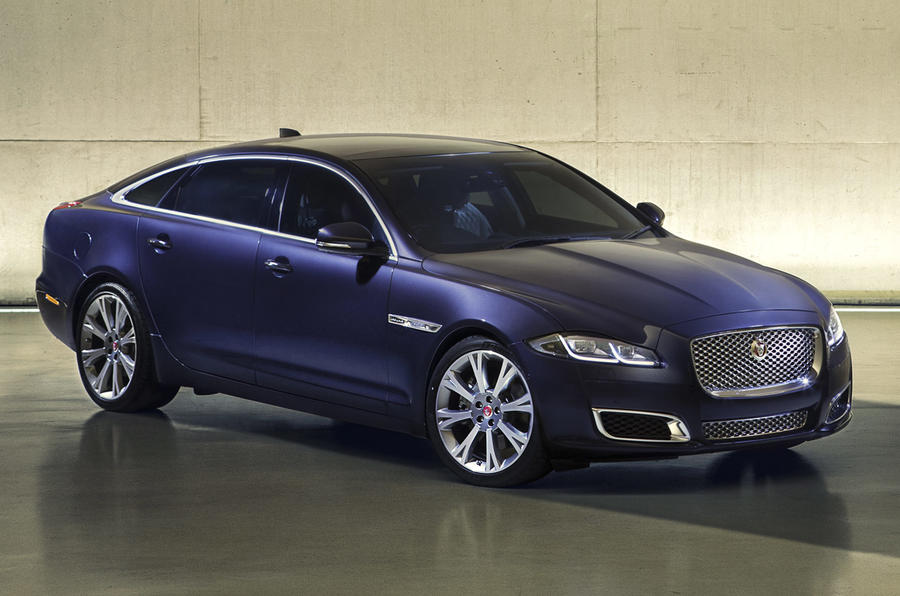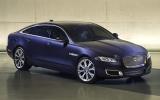What is it?
It’s an updated version of Jaguar’s long-standing Jaguar XJ, the revisions to which are aimed at maintaining the luxury saloon’s appeal alongside newer rivals.
This generation of Jaguar luxury four-door XJ, codenamed X351, was first launched in 2009. Since then it’s only been lightly revised, receiving minor cosmetic and technical tweaks in 2014, and that has left it languishing behind more modern alternatives.
After all, 2013 marked the launch of the all-new Mercedes-Benz S-Class, Audi revealed its heavily revamped A8 in 2014, and new competition arrived this year in the form of the sixth-gen BMW 7 Series. Then you’ve the likes of the continually evolving and advanced Tesla Model S, providing a desirable electric luxury alternative to the mainstream internal combustion-engined models.
So in order to keep the XJ in contention, Jaguar has carried out a range of upgrades. Externally, the XJ's design has been refreshed with a larger, more upright grille, LED headlights and new daytime running lights.
Inside, key upgrades include a new and reputedly far better ‘InControl Touch Pro’ media system, while the 12.3in driver’s display can now show full-screen navigation, just like Audi’s Virtual Cockpit. A range of new safety features is also fitted, including adaptive cruise control with queue assist and a 360-degree camera system.
One other prominent technical revision is the adoption of electric power steering assistance, in order to improve efficiency and enable more advanced safety systems. It’s only claimed to reduce fuel consumption by up to three percent compared to the hydraulic rack, but every little counts these days.
The system is claimed to respond faster and deliver more feedback than the outgoing hydraulic rack, too. Bold claims, but we’ve been impressed with the same set-up in the F-Type and Jaguar XE.
Jaguar has also boosted the output of its twin-turbocharged 3.0-litre V6 diesel. Previously the V6 produced 271bhp and 443lb ft. Now, thanks to upgraded injectors and more efficient turbochargers, it outputs 296bhp and 516lb ft – hikes of 25bhp and 73lb ft respectively.
The 0-60mph time has dropped from 6.0sec to 5.9sec as a result. Emissions have also fallen, from 159g/km of CO2 to 149g/km, while fuel consumption has decreased from 44.8mpg to 48.0mpg.
This flagship long-wheelbase Autobiography version, a new addition to the XJ range, comes with plenty of kit. Standard equipment includes quad-zone climate, heated and cooled seats all round, a 1300W Meridian sound system, sat-nav, DAB, digital TV and massaging rear seats. It also gets benefits from some smart interior upgrades, including a leather headliner, oak veneer inlays and stainless steel trims.



























Join the debate
Add your comment
Cat Mojo
I'll believe you, this time.
The wet weather merely exacerbates the problem too. :(
RE: This time
Much obliged, Zeddy!
"in drive, sitting on the
Ah! You'll be one of the many ar5es who thinks it's perfectly ok to blind drivers sitting behind you with the HI brake lights.
RE: Sitting on the brakes
Afternoon Zeddy. A little presumptuous of you to assume I'm doing that in heavy traffic; perhaps I should have been clearer. A lot of my previous cars have been automatics and dazzling people with the brake lights is something I'm always conscious of. Consequently, I always endeavour to drop into neutral or park when appropriate and possible. Regardless, this vibration is felt whenever you come to a halt and sit on the brakes, for example at a roundabout or while manoeuvring, when it is not appropriate to drop out of drive. Consequently, I felt it worth mentioning.
Zeddy wrote: "in drive,
I know we're talking automatics here, but I'm sure many people with manuals are encouraged to hold their car on the foot-brake rather than the hand-brake due to hill-hold devices..